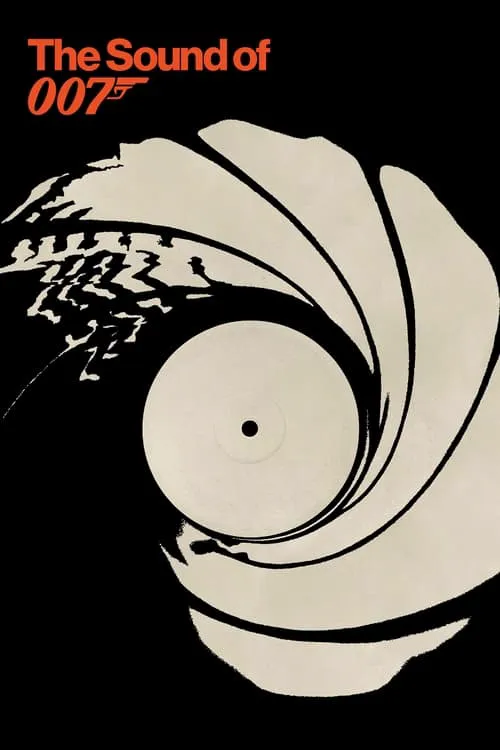The Sound of 007

Plot
The Sound of 007 chronicles the captivating history of James Bond themes, delving into the world of espionage and cinematic music as it has been synonymous with the 007 franchise for over six decades. Beginning with the 1962 film Dr. No and concluding with Daniel Craig's swan song in No Time to Die, this comprehensive journey examines the evolution of the iconic Bond theme, from its inception to its enduring influence on the world of cinema and beyond. At the forefront of the Bond phenomenon is Sean Connery, whose portrayal of the suave and sophisticated spy in the early 1960s laid the groundwork for the franchise's eventual success. Dr. No, directed by Terence Young and released in 1962, kicked off the long-standing partnership between Connery and the franchise, with the iconic title song "James Bond Theme" composed by Monty Norman. This pioneering score, which still stands today, has undergone many variations but remains indelibly linked to the character of James Bond. As Bond's cinematic legacy grew, so too did the role of the theme music in capturing the essence of the character and the movies in which he appeared. The subsequent Bond entries, including From Russia with Love (1963), Goldfinger (1964), Thunderball (1965), and You Only Live Twice (1967), each boasted unique and captivating themes that reflected the era's changing musical tastes. The likes of "From Russia with Love" by Lionel Bart, "Goldfinger" by John Barry and Leslie Bricusse, and "You Only Live Twice" by John Barry and Leslie Bricusse & Lesley Reed demonstrate an artistic progression from the early Bond theme. The late 1960s and the 1970s saw a shift in the style and tone of the Bond themes, with the character facing increased scrutiny in a rapidly changing world. Themes like "On Her Majesty's Secret Service" by John Barry, "One More Time" by Francis Lai, and "Diamonds Are Forever" by John Barry & Don Black began to incorporate more contemporary and atmospheric elements, reflecting Bond's adaptation to modernity while still upholding his suave and debonair persona. In the 1980s, the franchise welcomed a new generation of writers and artists who introduced fresh, sophisticated sounds that captured the mood of the era. "Octopussy" by John Kamps and George Martin and "A View to a Kill" by John Barry & Leslie Bricusse & Duran Duran are prime examples of the style that defined Bond themes during the 1980s. At the same time, themes like "Nobody Does It Better" by Carly Simon and Carole Bayer Sager and Marvin Hamlisch demonstrated the genre-bending potential of the Bond theme, which can incorporate a wide range of musical styles from jazz to electronic and beyond. Roger Moore, the actor who played Bond during the 1980s, brought his own brand of humor and sophistication to the role, influencing the style of the Bond themes. The franchise saw a surge in popularity, thanks in large part to Moore's charismatic portrayal of Bond. By the late 1980s, the Bond theme had become as essential an element as the character himself, capturing the spirit of each film while reflecting the decade's cultural climate. In the 1990s, George Lazenby's return in On Her Majesty's Secret Service sparked a new era for the Bond theme, with the character regaining his earlier grit and vulnerability. This subtle shift in tone and direction paved the way for Pierce Brosnan's Bond, a more nuanced performer who demanded a more sophisticated and introspective score. "The World Is Not Enough" by David Arnold & Don Black and "Tomorrow Never Dies" by Arnold & Burt Bacharach & Elvis Costello showcased Arnold's remarkable ability to seamlessly blend past and present musical styles, resulting in unforgettable and timeless Bond themes. In the subsequent years, the role of Bond saw a significant reinterpretation with Daniel Craig, whose performances in Casino Royale (2006), Quantum of Solace (2008), and Skyfall (2012) led to a reevaluation of the character. "The Name Is Bond" - this was reflected in the music scores, with composers like David Arnold and Thomas Newman working closely with director Sam Mendes to create sonic backdrops that echoed the darker, more grounded spirit of the new Bond. As Craig's tenure continued into No Time to Die, the Bond theme has become increasingly introspective, mirroring Bond's grappling with personal demons and the erosion of his world. Throughout the years, the music for the Bond franchise has been an enduring constant that transcends the character's on-screen persona. Each new score, regardless of the decade or actor, brings with it an evolution of style and atmosphere, reflecting a deep connection with the shifting landscape of the character himself.
Reviews
Recommendations




